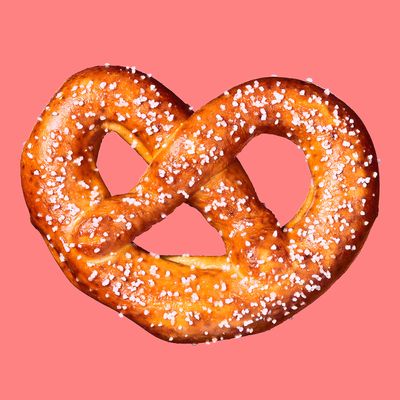
Should you find yourself at a New York City location of a chain restaurant this week, you will find something new on the menu: menacing little black triangles, each encasing a white salt shaker, meant to signify that the dish in question contains an excessive amount of sodium. The warning labels are in accordance with a rule passed by the NYC Board of Health earlier this fall, and they’re intended to alert consumers that an item on a chain restaurant’s menu contains at least 2,300 milligrams of sodium.
It sure sounds like a nice idea. Who can argue with knowing more about what’s in the food we order at restaurants? And 2,300 milligrams is indeed a lot of sodium — the FDA recommends that you shouldn’t consume more than 2,400 milligrams per day. But the best available research has found no indication that healthy people should cut down on their sodium — and, anyway, even if that were the case, the warnings probably wouldn’t work to change people’s ordering or eating behaviors, judging from previous menu-labeling attempts in New York and elsewhere.
While it’s true that diets high in sodium are likely to be harmful for the estimated 70 million Americans with high blood pressure, there’s no good evidence that most Americans are currently consuming too much salt, Dr. Aaron Carroll, a professor at Indiana University School of Medicine, told Science of Us. In a column last year for the New York Times, Carroll wrote that the average American consumes about 3.4 grams of sodium a day, a figure that fits right into what the latest research indicates as the “safe zone” of three to six grams daily. “It appears that there’s some evidence — you know, if you have high blood pressure — that you may benefit from reducing your salt intake, if you’re eating a lot of salt,” Carroll told Science of Us. “But that doesn’t mean it’s one of those things where everybody needs to reduce their salt, or that we need sort of a blanket warning for everybody.”
The latest research shows that more than six grams of sodium per day is bad news, associated with higher risk of heart attacks, heart failure, and strokes, so the scramble to recommend very low levels of sodium is understandable. But the other extreme is potentially dangerous, too. Carroll nods to one study published last year in the New England Journal of Medicine that found that people who ate very little salt (less than three grams per day) had an even higher risk for heart problems than those who ate too much.
So if most people are already consuming what the best available evidence suggests is a healthy amount of sodium per day, then these warning labels are attempting to change a habit that doesn’t really need changing. And, anyway, while it’s great to have more information about what’s in the food we’re ordering in restaurants, information alone is not enough to get people to change their eating behaviors. There have been several studies at this point examining what happens when calorie information is added to restaurant menus, and the answer tends to be: not much, actually. For example, in one study, researchers approached McDonald’s customers before they made their orders, handing some of them nutrition information about the menu items. You might assume, as the researchers did before starting their study, that those who were given the nutrition information would use it to make better choices — but this is not what happened. Instead, there was no difference in calories ordered by those who were given the information and those who were not.
This is not altogether surprising to Carroll. “Does anyone not know that, really, we’re eating too many calories at this point? The idea that somehow we’re going to tell people, ‘Hey, this huge plate of pasta is full of calories,’ and people are going to be like, ‘Well, I didn’t know! I’m going to stop doing that!’ I just don’t believe that,” he said. Likewise, the sodium warnings will only appear on items that contain excessive — likely obviously so — sodium. As Grub Street has noted, the label will apply to just 10 percent of foods currently on menus; even most fast-food burgers don’t contain that much sodium. “Is anyone going to be shocked that, like, a pretzel covered in salt is high in sodium? And that’s what’s all of a sudden getting a warning label that says, ‘Salty thing is salty’ — that’s what’s going to stop them?” Carroll said.
Instead, research from Cornell University’s Brian Wansink (and others) has shown that a better way to get people to eat healthy may be to use environmental cues — tiny, almost imperceptible nudges. Wansink’s research has found that something as simple as soft lighting and soft music can implicitly encourage people to order healthier food; even where you are seated in a restaurant has an affect on how you order. More information about what’s in our food is great, but most people aren’t likely to make changes to their eating habits just because they know better.




